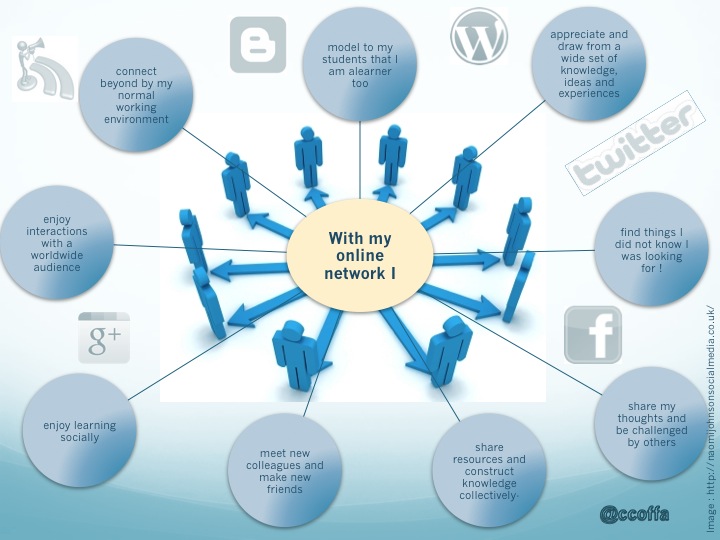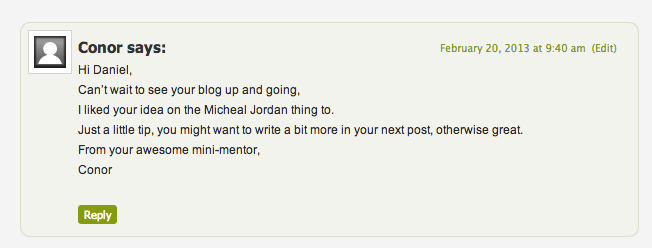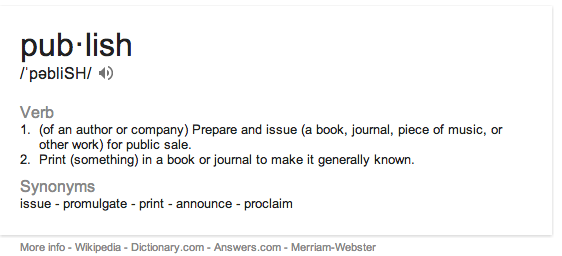As I browse Twitter and read blogs I am inspired and amazed by the enthusiastic members of the teaching profession who take the time to share their feelings, knowledge and skills. I know there are wonderful teachers who do not appear in my Twitterstream or RSS feeds, but I am struck by those that do. I realise that the ‘on-line’ world is not familiar to everyone, confidence and interests vary from person to person. People make their own personal decisions about how to spend their time. Many wonderful words of wisdom cross the staffroom tables everywhere, and wonderful things happen in every classroom. But the world has changed, teaching is no longer private. It is common place for staff to observe each other, work collaboratively, share challenges and successes. Different school communities make this happen in different ways but I notice it IS happening everywhere to some degree. Our school world must mirror the world that our students inhabit when they walk out the school gate. Teachers being involved in connecting and communicating is a vital cog in the wheel.
Anyone who knows me, will know that I am far more introverted than extrovert. This has not stopped me from feeling quite comfortable in an on-line professional world. In fact, it is probably why I enjoy this learning style – I can lurk, browse and choose to contribute when I feel I have something to add. At a face-to-face meeting with strangers, I will not be the quickest one to add my 2c worth to a discussion. Although, I am developing confidence as I become more passionate and experienced on some subjects.
Every teacher I know has something to add to the conversation, how can we make those more reticent feel more enthusiastic to join in? I know that writing a blog post is not the way some people reflect (although I heartily recommend it), but I believe everyone could benefit from joining in, even if it is by simply reading and adding odd comments. In a world, where we are encouraging, if not requiring our students to become more overtly reflective learners, I believe teachers can benefit from this too!
I don’t think it is going too far to suggest, that teachers who do not pursue some form of connection, further education/stimulus, awareness raising or self directed inquiry learning are doing themselves and their students a disservice. The level of that involvement will naturally vary according to interest and time. The time element is often the excuse, but when I see the involvement of those I follow and read I think, “If they can do it….”
As discussed in previous posts, Twitter is a tool that takes time to learn and master, but I think you will have resounding agreement if you ask teachers who have taken the time about the benefits. Blogging, similarly can take time, time to develop a core library of relevant writers, time to feel confident to post your thoughts.
How do we convince those not yet convinced to jump on board? I get frustrated that it is all here and could be much richer with an even wider contributing audience. I prepared this graphic a while ago for another purpose but it summarises the benefits I receive from my involvement in an online network.

 I am trialling the App Posts for the first time. (I know it is probably not new, but it is to me). I have a natural tendency to revert to my MacBook Pro or desktop when I compose posts but thought I would take this App for a spin. First impressions are good. I like the interface, the preview of posts and comments. Placing the image (a screenshot) was straightforward and speedy.
I am trialling the App Posts for the first time. (I know it is probably not new, but it is to me). I have a natural tendency to revert to my MacBook Pro or desktop when I compose posts but thought I would take this App for a spin. First impressions are good. I like the interface, the preview of posts and comments. Placing the image (a screenshot) was straightforward and speedy.


